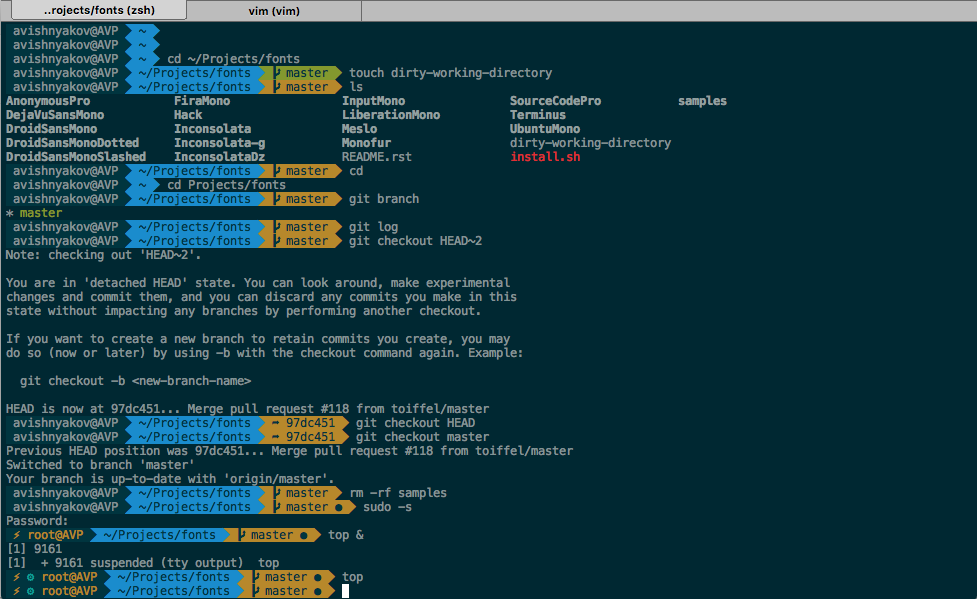

I also advice you install iTerm2 as your default terminal on macOS. There you have to navigate to the source /root & delete whatever existing file they said & then do the system link command required to create it again but sourced from home. Installing themes, plugins, setting default aliases and functions can proof to be a. Then after that go on and change the shell chsh -s $(which zsh) $(whoami)īUT if you already changed the shell before making the system links then you will get a return of probably /root/.zshrc or so file already exists. ln -s $HOME/.oh-my-zsh /root/.oh-my-zsh Zsh is a shell designed for interactive use though its also a powerful scripting.If you have normally setup the zsh shell & oh-my-zhs framework, then don't just sudo su into root & type chsh -s $(which zsh) $(whoami) to change shell & frameworkįirst create system links in root of your home shell & framework configs

Figure 4 Once there, choose the font Meslo LG L DZ for Powerline, and you are done - the 'agnoster' theme works now. After installing the font, you can enable the Agnoster theme by changing the ZSH. After that, open the iTerm terminal, go to the 'Preferences' and click on the 'Profiles' tab (iTerm2 > Preferences > Profiles). For this, you first need to download a font that supports the unique characters and icons used by the theme. First install zsh or some shell with say oh-my-zsh as a normal user. Now that Zsh and OhMyZsh are installed, you can continue by configuring your terminal theme. zshrc To open the config file (.zshrc), run the command: nano /.zshrc Zsh theme set to agnoster You then need to select this theme in your /.zshrc.


 0 kommentar(er)
0 kommentar(er)
